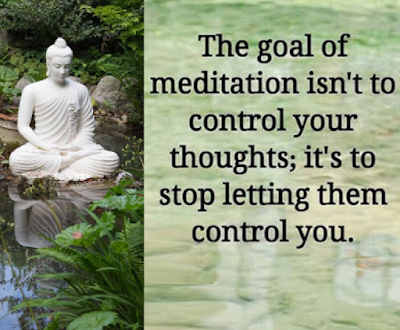Dhr. Seven, Kalyana Mitta based on BethUpton.com, Ashley Wells (ed.), Wisdom Quarterly
Buddhist retreats are the way of attainment for modern Americans with no time to ordain and play the role of monastic -- stressing and fussing, trying to follow endless rules and learning a foreign etiquette. One might sign up to many in search of a great and accomplished teacher.
That's no easy feat, to find a suitable teacher, to carve out the time in our busy lives, and to calm down to make the most of it instead of overdoing it and exhausting oneself, ending up only with frustration and confusion as to what was missing from one's practice.
Wisdom Quarterly made it possible to follow in my successful friend's footsteps to apply for a spot with a better teacher, a successful Western student of the Great Asian Teacher, who's not always easy to understand and has a limited number of ways of explaining things.
This Western teacher was able to find endless ways of explaining things, from the Buddha's examples to modern Western examples one could easily relate to.
So the wilderness was the desert in Southern California, springtime with everything in bloom, windy and cool most of the time, dry and flowering.
The teacher was Londoner Beth Upton (formerly Sayalay Anutara, a ten precept nun in the forests of Burma).
The lesson was "simple but not easy," to balance my sense of urgency with contentment. Why would I want to reduce my urgency? My sense of urgency brings me to my mat. Ah, I learned, but it's my contentment that keeps me there.
Lesson 1: Let your sense of urgency bring you to the mat. Let your contentment keep you there.
The training was gradual. But, Beth, I'm in a hurry! I've only got a short time to make an end of all time, aka, samsara. "Nirvana is already here," I heard my Mahayana friends whispering in my head. It isn't, but it sure is good to see it that way, because then one is able to relax and exhale (let go).
Lesson 2: Sit up. Let go.
In yoga, it's called samadhi ("stillness") by sadhana ("daily practice")
Then the practice became joyful. I didn't know it was supposed to be joyful. "Love my object"? Who ever heard of such a thing. Did the Buddha say that? Show me the sutra. The "naturals" who take to meditation with the ease a fish takes to water or a bird to the sky know this without knowing. They just do it without all that mediation of thought, debate, doubt, skeptical inquiry, or arguing. Of course it's this way.
Lesson 3: Radically accept it. Love it.
I was meditating on my in-and-out breath. I had been for years. It's a drudge. It's work in exchange for liberation; I've been trying to buy my way out with the "penance" of suffering on the mat, the harder the better. This was all wrong. When I learned to love my object, I didn't need to whip and berate the mind (attention) to stay on it. Focus was easy, as if to say effortless. My mind wanted to go there as it got subtler and subtler.
Lesson 4: The meditation object must be an increasingly subtle one, leaving behind the coarser.
There's a sutra (MN 20, "The Removal of Distracting Thoughts") in which the Buddha gives the meditators pursuing the "higher mind" five pieces of advice on letting go of distractions.
- Give attention to something what is wholesome to remove unwholesome thoughts.
- Examine the danger of unwholesome thoughts (and then the mind naturally pulls away and averts them without extra effort).
- Forget those thoughts and don't give any attention to them.
- Give attention to stilling the thought-formation of those thoughts.
- Constrain those thoughts by force. (DON'T do this except in extreme cases, as when one is about to commit a defeat offense or engage in really bad karma).
It's the fourth piece of advice that is the key here. Who knows what a thought-formation (sankhara) is? It's not important. What's important is the simile the Buddha gives on HOW to do this:
Coarse or subtle?
 |
| Perception gets subtler and subtler |
"So, too, when a meditator gives attention to stilling the thought-formation of those thoughts...one's mind becomes steadied internally, quieted, brought to singleness [unity, one-pointedness], and stilled [concentrated, unified, made coherent]."
Lesson 5: Go more and more subtle by leaving the coarse behind.
 |
| If we listen sooner, we'll get there sooner. |
Therefore, if one is trying to forget, ignore, overcome, or not allow to arise thoughts connected with craving, aversion, or delusion, one should give attention to still the thought-formation of those thoughts" in this way. It's great advice.
Let's replace the coarse with the subtle, the efforting with the ease, breathing in with breathing out, all the while paying attention to the subtle thing before us. This is the way of progress because increasingly subtle things will come up on the Path. And that's the desirable thing to have happen, seemingly effortlessly, not by laziness but by BALANCED effort or "right ease."
Lesson 6: Stay with the pointer or, to be exact, what it's pointing at.
Harry Nilson sings, "Me and My Arrow." What's his point? His point is his pointer, his arrow. In this case, I have my experienced teacher who points the way to what she herself has not only learned but personally experienced. She's the initial pointer.
Lesson 7: Stick with it to the final goal (nirvana in this very life) which, if Mahayana is correct, will be right here.
After that, my own nose is the pointer pointing at my meditation object -- my increasingly subtle breath brought on by my increasingly subtle mind able to remain with my object as it calms and slows and becomes almost imperceptible. Then it becomes light (the threefold nimitta). I ignore it, as instructed. It will strengthen and eventually replace my object (the in-and-out breath) with something even more subtle, all while I keep my attention on exactly the same place, that area right under my nose.
Me and My Arrow
Harry Nilson's original song from the animated 1977 film The Point
LYRICS
Me and my arrow
Straighter than narrow
Wherever we go everyone knows
It's me and my arrow
Me and my arrow
Taking the high road
Wherever we go everyone knows
It's me and my arrow
And in the morning when I wake up
She may be gone
I don't know
And if we make up just to break up
I'll carry on
Oh yes I will
Me and my arrow
Do do do do do do do do
Straighter than narrow
Wherever we go everyone knows
It's me and my arrow
Me and my arrow
Me and my arrow
Me and my arrow
Me and my arrow
Me and my arrow
Me and my arrow
Do do do do do do do do
Straighter than narrow
And wherever we go everyone knows
It's me and my arrow
























